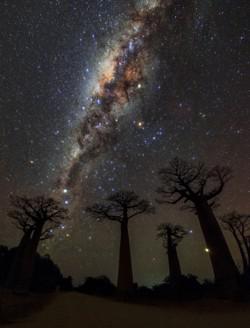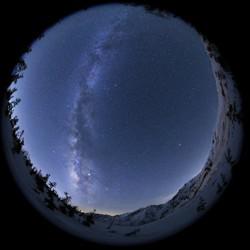Glossary term: Saturne
Description: Saturne est la sixième planète à partir du Soleil et la deuxième plus grande des planètes en termes de taille et de masse. C'est une géante gazeuse d'un diamètre de 120 000 kilomètres (km), soit 9,4 fois le rayon de la Terre. Saturne a la densité la plus faible des planètes du système solaire, moins dense que l'eau sur Terre. Sa masse est 95 fois supérieure à celle de la Terre.
Sa distance moyenne par rapport au Soleil est de 1,4 milliard de km, soit environ 9,5 unités astronomiques (distance Terre-Soleil). Il faut 29,4 ans à Saturne pour parcourir une orbite autour du Soleil. Les astronomes ont détecté plus de 140 lunes ou satellites naturels en orbite autour de Saturne. Parmi ces lunes, Titan est la plus grande et la seule lune du système solaire à posséder une atmosphère significative.
Nommée d'après le dieu romain de l'agriculture, Saturne est considérée comme le joyau du système solaire. Elle est visible à l'œil nu sous la forme d'un point lumineux mat dans le ciel. Bien qu'elle se trouve à plus d'un milliard de kilomètres de la Terre, les magnifiques anneaux qui l'entourent sont visibles à l'aide d'un petit télescope.
Related Terms:
See this term in other languages
Term and definition status: The original definition of this term in English have been approved by a research astronomer and a teacher The translation of this term and its definition is still awaiting approval
The OAE Multilingual Glossary is a project of the IAU Office of Astronomy for Education (OAE) in collaboration with the IAU Office of Astronomy Outreach (OAO). The terms and definitions were chosen, written and reviewed by a collective effort from the OAE, the OAE Centers and Nodes, the OAE National Astronomy Education Coordinators (NAECs) and other volunteers. You can find a full list of credits here. All glossary terms and their definitions are released under a Creative Commons CC BY-4.0 license and should be credited to "IAU OAE".
If you notice a factual or translation error in this glossary term or definition then please get in touch.
Related Media
Saturne
Credit: NASA, ESA, A. Simon (Goddard Space Flight Center), et M.H. Wong (Université de Californie, Berkeley) credit link
License: CC-BY-4.0 Creative Commons Attribution 4.0 International (CC BY 4.0) icons
Flowing Night Sky
Credit: Robert Barsa/IAU OAE
License: CC-BY-4.0 Creative Commons Attribution 4.0 International (CC BY 4.0) icons
Voie lactée au-dessus de l'Avenue des Baobabs
Credit: Amirreza Kamkar/UAI OAE
License: CC-BY-4.0 Creative Commons Attribution 4.0 International (CC BY 4.0) icons
La Voie lactée à travers le zénith
Credit: Ohnishi Kouji/UAI OAE
License: CC-BY-4.0 Creative Commons Attribution 4.0 International (CC BY 4.0) icons
Equatorial Milky Way
Credit: Giorgia Hofer/IAU OAE
License: CC-BY-4.0 Creative Commons Attribution 4.0 International (CC BY 4.0) icons













